#Macroscelidea
Explore tagged Tumblr posts
Note
may i please suggest the incredibly goofy short-eared elephant shrew. bro is basically a furry sphere with stick legs and a really long tail, aka Perfection
The ideal creature!
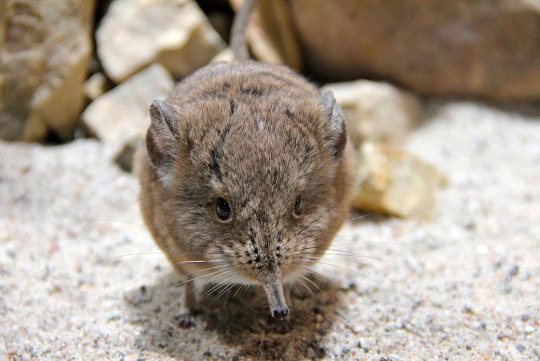
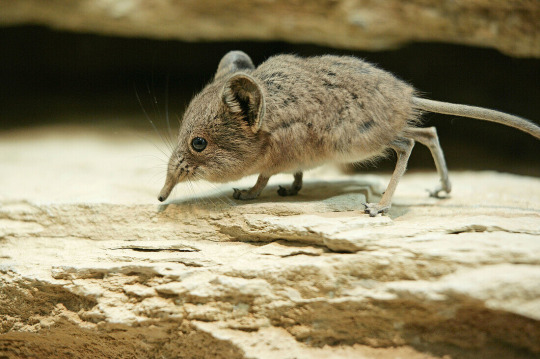
#southeast africa#botswana#namibia#south africa#round-eared shrew#short-eared shrew#mammalia#mammal#mammals#Macroscelidea#Macroscelididae#animal polls#poll blog#my polls#animals#polls#tumblr polls
82 notes
·
View notes
Text

Black and Rufous Sengi (Rhynchocyon petersi) - (c) SaritaWolf - please do not repost
0 notes
Text
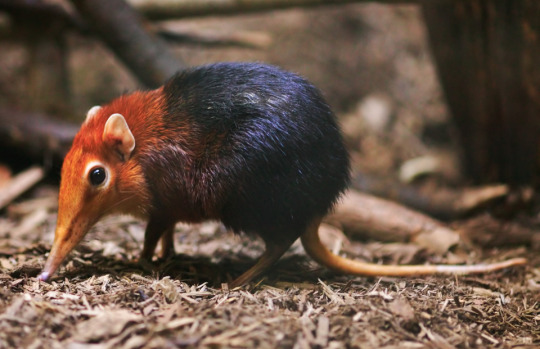

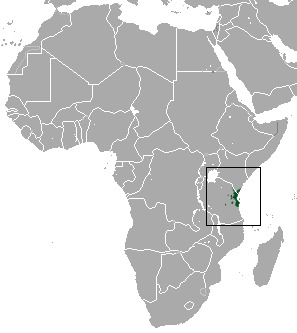
#poll#Class: Mammalia#Order: Macroscelidea#Family: Macroscelididae#Genus: Rhynchocyon#Rhynchocyon Petersi#Range: Afrotropical
46 notes
·
View notes
Text
Round 3 - Mammalia - Macroscelidea



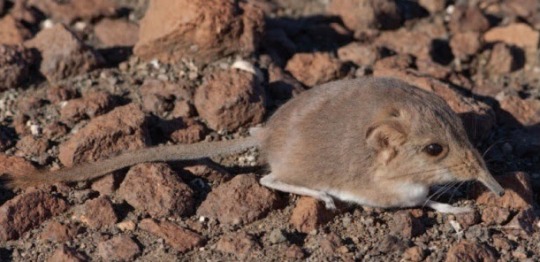
(Sources - 1, 2, 3, 4)
Our first group of placental mammals, as well as our first group belonging to a diverse clade of mammals known as “Afrotherians”, the order Macroscelidea are commonly called “elephant shrews”, “jumping shrews”, or “sengis.” Like many animals commonly called shrews, macroscelideans are not true shrews, and are closer related to elephants than they are to shrews! Macroscelidea includes one family, Macroscelididae, with 20 species in 6 genera.
Sengis are small, quadrupedal, and insectivorous. They have long, flexible snouts, which they use to search for food, with the length of the snout varying between species. They will then use their tongue to flick food into their mouth, much like an anteater. They eat mainly insects, spiders, centipedes, millipedes, and earthworms. Some species also feed on small amounts of plant matter, especially new leaves, seeds, and small fruits. They have long legs relative to their size, and scaly tails. They have large canine teeth, and also high-crowned cheek teeth similar to those of ungulates. They are mostly diurnal and very active, wary, well camouflaged, and adept at dashing away from threats. Several species make a series of cleared pathways through the undergrowth and spend their day patrolling them for insect life. If the animal is disturbed, the pathway provides an obstacle-free escape route. Sengis are uncommon, but widely distributed across Africa, mainly southern Africa.
Sengis are solitary, despite many species living in monogamous pairs. These pairs will only meet for mating, and not associate otherwise, living in separate nests. They share and defend their home territory, which is marked using their scent glands. Female sengis undergo a menstrual cycle similar to that of humans, making them one of the few nonprimate mammals to do so. The sengi mating period lasts for several days. After mating, the pair will return to their solitary habits. After a gestation period varying from 45 to 60 days, the female will bear a litter of one to three young. The young are born relatively well developed, and are able to run within a few hours. They remain in the nest for several days before venturing outside. After five days, the young's milk diet is supplemented with mashed insects, which are collected and transported in the cheek pouches of the female. The young then slowly start to explore their environment and hunt for insects. After about 15 days, the young will begin the migratory phase of their lives, and will eventually begin to establish their own territories. Females have litters several times a year.
Macroscelids are thought to have diverged from other afrotherians roughly 57.5 million years ago. The earliest definitive member was Chambia from the early-middle Eocene of Tunisia. Some early macroscelids, such as Myohyrax, were so similar to hyraxes that they were initially included with that group, while others, such as Mylomygale, were relatively rodent-like. These unusual forms all died out by the Pleistocene. The diversification of living macroscelids apparently began when the Rhynchocyon lineage split off about 33 Ma ago, in the early Oligocene.

Propaganda under the cut:
Sengis are one of the fastest small mammals, having been recorded to reach speeds of 28.8 kilometres per hour (17.9 mph).
Unlike most other sengis, Short-snouted Elephant Shrews (Elephantulus brachyrhynchus) utilize a network of safety burrows by digging their own burrows or stealing the pre-existing burrows of rodents.
The Cape Elephant Shrew (Elephantulus edwardii) feeds on both insects and the nectar of plants, covering its long nose in pollen. It is an important pollinator for the Pagoda Lily (Massonia bifolia), Hyobanche atropurpurea, and the Sulphur Sugarbush (Protea sulphurea).
The Somali Elephant Shrew (Galegeeska revoilii) was among the 25 "most wanted lost species” that were the focus of Global Wildlife Conservation's “Search for Lost Species” initiative. On 18 August 2020, 50 years after it was last seen and recorded, it was announced that a population had been found in Djibouti, the first documented since 1968.
Rufous Elephant Shrews (Galegeeska rufescens) are very meticulous about their foraging trails (see gif above). Throughout the trails are several spots for resting, scent-marking, and sunbathing. They maintain their trails by pushing aside leaf litter and other loose debris. The males usually spend most of their time cleaning the trails.
Young Rufous Elephant Shrews will climb on their parents’ backs and vigorously rub their four feet in the fur in a rapid vibrating motion. This allows them to transfer odors from scent glands on their feet to their parents, as well as pick up their parents’ scent. The mixture of the scents creates a family odor that can be used for recognizing family members.
The Etendeka Round-eared Sengi (Macroscelides micus) (image 4) is the smallest known sengi. It weighs less than one ounce (28 grams) and is 19 cm (7.3 inches) long, including the tail, when fully grown.
The Grey-faced Sengi (Rhynchocyon udzungwensis) is the largest known sengi, on average 56.4 cm (22.2 in) long, and weighing 711 g (1.6 lbs). This species was only recently discovered in January 2008.
#animal polls#round 3#mammalia#gonna just grit my teeth and bear it if anyone mentions Sing My Angel Of Music because if people only know these animals through memes#at least they know them
71 notes
·
View notes
Text
Nearly all the megafauna we associate with Africa today is immigrants. For the last 30 million years or so, its dominant mammalian families have been Bovidae (antelopes, gazelles, gnus, buffaloes), Giraffidae (giraffes), Hippopotamidae (hippos), Camelidae (dromedaries), Felidae (lions, leopards), Canidae (jackals, wild dogs), Hyaenidae (hyaenas), Rhinocerotidae (rhinos), Equidae (asses, zebras), Hystricidae (African porcupines)... nearly all came from outside. Mostly Asia; some from America! (The big exception is elephants).
For the first half of the age of Mammals, say 60 to 30 million years ago, Africa was an island-continent, cut off from the rest of the world by the warm currents of the Tethys Sea:

(Map by Chris Scotese; other pics from Wiki unless noted otherwise)
And, much like Australia in later times, it had developed its own unique fauna of endemic mammals, unknown in the rest of the world. It mostly formed a single clade, appropriately called Afrotheria, which had branched off other placentate mammals in the time of the last dinosaurs. And what were these Afrotheria?




Some of the smallest are still among us. Tenrecs and golden moles (order Afrosoricida), elephant shrews (order Macroscelidea), and hyraxes (order Hyracoidea), the African answer to hedgehogs, moles, shrews, and rabbits, respectively. They are not closely related to their Amero-Eurasian analogues, but they live in much the same way, and much in the same way they did when Africa was an island.

But some of them could grow quite large! Alas, Titanohyrax is known only from its jaws. Thankfully, the jaws and teeth of mammals are very distinctive and allow very precise identification.
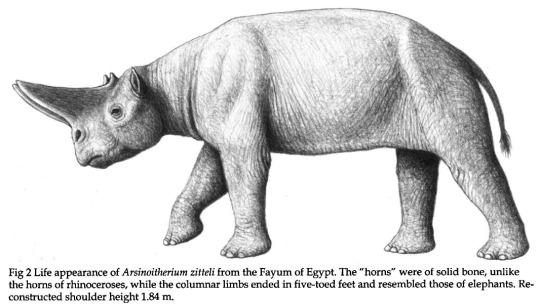
And as for the true giants? Behold magnificent Arsinoitherium (order Embrithopoda), which was a rhino before there were rhinos. No close relation -- in fact, its horns were hollow cones of bone, whereas those of rhinos are made of solid keratin, like giant fingernails. (Sketch by Mauricio Anton, from this wonderful paper by him and Alan Turner).

Then there were the early Sirenians, the still only semi-aquatic ancestors of dugongs and manatees (and the first who broke containment: the proto-manatees Pezosiren and Prorastomus ended up in Jamaica when Africa was still an island, and they still had legs!)

And of course there were early Proboscideans, the grandparents and granduncles of elephants, like Moeritherium, who roamed Egypt when it was still a tropical swamp...
But no isolation lasts forever. Around 40 million years ago, Africa had drifted close enough to Eurasia for some animals to cross through the Tethys. As the seafloor was crushed between continents, the smoking islands that would become Italy, Greece, Turkey, and Iran were rising in between.

Among the first to cross were Primates, such as Afrotarsius, a sort of midway between tarsiers and true monkeys. They did well in the jungles on both sides of the Tethys, spawning macaques, vervets, langurs, baboons and eventually, in the woodlands around Lake Victoria, the first apes.
Another such groups were Rodents -- specifically the Phiomorpha subgroup, in which we find all sorts of distinctly African species such as Old World porcupines, cane rats, and naked mole rats. This is to say that Primates and Rodents did well for themselves after sneaking in.
But then, 30 million years or so, Africa crashed into Eurasia. All barriers to migration went away (well, they came and went with the sea level, but the point is, Africa was no longer super-Australia anymore). And then what we think of today as "African fauna" rushed in.
Here is what African macrofauna looked like at that point, as ungulates and carnivorans were starting to show up:
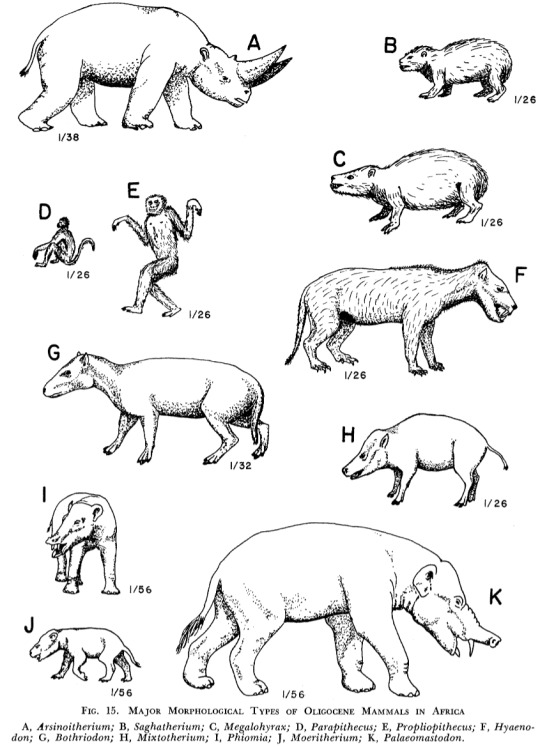
(H. B. S. Cooke, 1968)
The usual rule of thumb is that when two landmasses meet, the faunas of the smallest and/or most isolate landmass lose out. The later interchange between North and South America is a more famous example, but this is no exception.

The great Embrithopods vanished forever; other orders were relegated to small, humbler sizes. In came Bovidae, Giraffidae, Hippopotamidae, Rhinocerotidae, Felidae, Canidae, Hyaenidae, all sharpened by competition on a larger scale in the great grasslands of Eurasia. In came Equidae and Camelidae, which had appeared in North American plains alongside pronghorns (where did you think llamas come from?), and had gone all the way through Bering and Asia.
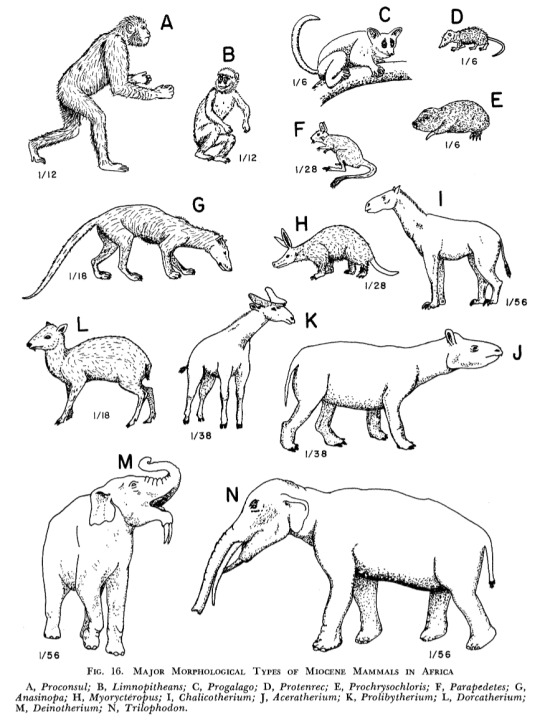
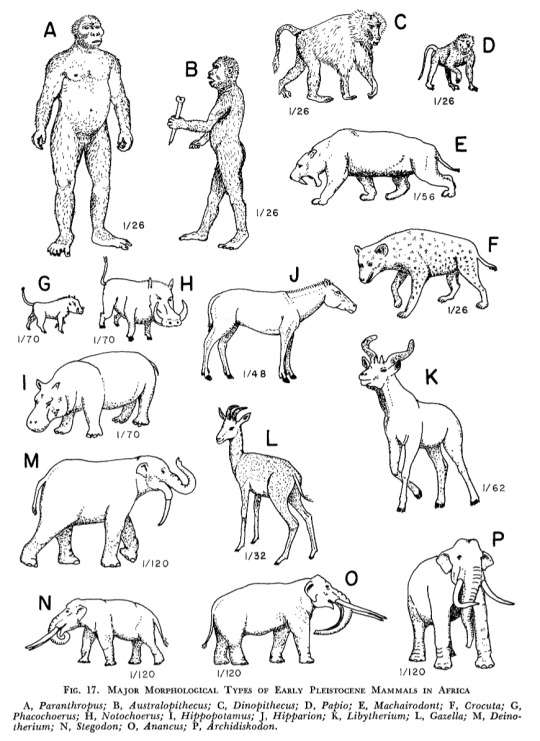
And by later ages, you see it yourselves: elephants and apes actually do quite well, but Eurasian carnivorans and ungulates now rule the land.
To be fair, many groups of pre-invasion African fauna did more than just endure. In the Miocene epoch, soon after the great exchange, apes would be found throughout Eurasia from Spain to China, and perhaps some key part of our own evolution took place there. Elephants were even more widespread, getting as far as South America; manatees invaded warm seawaters all around the Equator. Rock hyraxes and African porcupines had some success in the Near East and southern Europe. But I don't think any of these transformed the Eurasian landscape on the same scale as the African landscape was.
And to be sure, the newcomers were impressive!

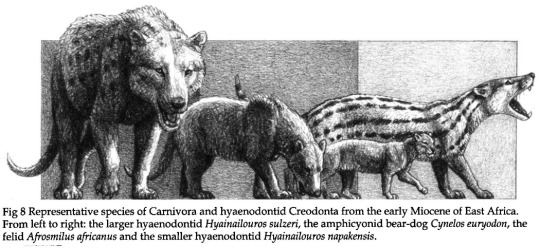
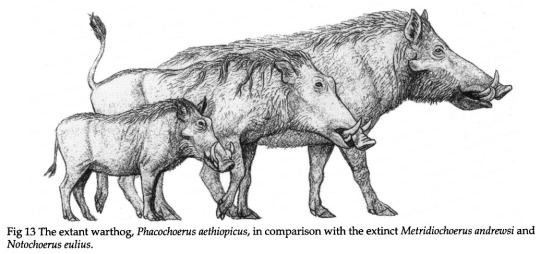
The wheel of ages turns and turns, caring little for who thrives and who falls -- but life as a whole, somehow, always falls on its feet.
28 notes
·
View notes
Text
Okay I don't want to stay with mammals for much longer so I'm gonna go through the rest of them here
There are 22 distinct groups of mammals, I've already covered three of them (Carnivora and the even and odd-toed ungulates).
Going through the remaining 19:
There are four groups of marsupials, but that doesn't matter because Rahi-wise there is only one species, the Fusa, a kangaroo. The Kikanalo might also count, but see my ungulate post for that ramble.
There are two groups of Xenarthra (armadillos, sloths, and anteaters) but there are no rahi equivalents at all.
Monotremes (echidnas and platypuses) have no representation either.
Same with Sirenia (manatees and dugongs), Lagomorphs (rabbits), Scandentia (tree shrews), Macroscelidea (elephant shrews), Erinaceidae (hedgehogs), and Afrosoricida (tenrecs and some other miscellaneous small African mammals).
Soricomorpha (shrews and moles) has one representative, the Archives Mole.
Pachyderms likewise also only have one rep, the Hapaka.
Cetaceans only have two reps, the Razor Whale and the Stinger Whale. There is a unique whale rahi in the 2003 console game, but much like with the unique fox rahi, I don't know if I can consider it canon given the nature of the game and how drastically different many canon rahi appear in it.
Chiroptera has three reps, the Cliff Screecher, the Ice Bat, and the unnamed bat rahi from the cancelled pc game and various other 01 promo renders.
There are three primates, the Brakas, a monkey, and two apes, the Lava ape and the Spiny Stone Ape. Much like with the Kavinika, I have some questions regarding if the Spiny Stone Ape is actually an ape, given that it has a tail and frankly, kind of looks like a dinosaur, but that's a discussion for another day.
Lastly, the rodents, of which there are quite a lot. There's the Gafna, the Ice Vermin, the Kinloka, the Kuma-Nui, the Lava Rat, the Stone Rat, and the Wolf Rat from the cancelled pc game. The Kuma-Nui and Wolf Rat are especially interesting considering that the former is really fucking huge, and the later engages in some interesting specevo, being a species of one group filling in the role of a species belonging to a different group.
There, that's every mammalian analogue rahi charted
19 notes
·
View notes
Text
Musaraña elefante (Macroscelidea)

La musaraña elefante, a pesar de su nombre, no está relacionada con los elefantes, sino que pertenece a su propio grupo. Este pequeño mamífero africano destaca por su alargada trompa, que le otorga una apariencia singular y le permite explorar su entorno en busca de insectos y pequeños invertebrados. Su agilidad y velocidad son notables, lo que lo convierte en un cazador eficiente y adaptado a su hábitat y posiblemente el animal más raro del mundo.
0 notes
Photo
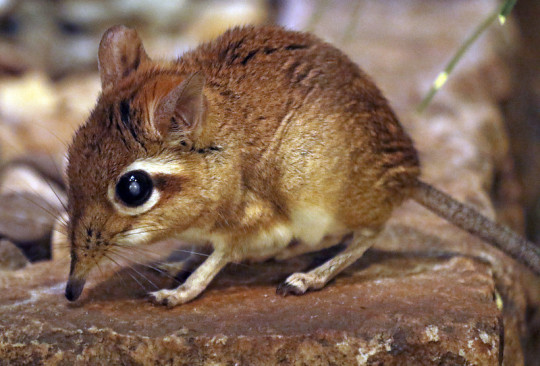
A rufous elephant shrew (Galegeeska rufescens) in Cologne Zoological Gardens, Germany
by Safi Kok
#rufous elephant shrew#elephant shrews#Galegeeska rufescens#Galegeeska#Macroscelididae#Macroscelidea#mammalia#chordata#captive animal#Cologne Zoo
27 notes
·
View notes
Photo
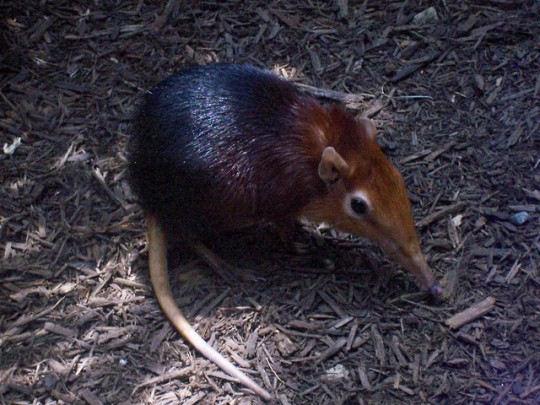
Black and rufous elephant shrew, (Rhynchocyon petersi)
#elephant shrew#mammal#macroscelidea#afrotheria#original photography#wildlife photography#take a closer look at that snout!#sengi
22 notes
·
View notes
Photo

#Short snouted Elephant Shrew#Mammalia#Macroscelidea#Macroscelididae#E. brachyrhynchus#Common Flat Lizard#Reptilia#Squamata#Cordylidae#P. intermedius
2 notes
·
View notes
Photo

[Is it inappropriate to ask for your age? Evaluating Parameter Impact on Tree Dating in a Challenging Clade (Macroscelidea)]
Hagemann et al. (2023)
300 notes
·
View notes
Text
The elephant shrew (or sengi) has the legs of a deer and the face of a worm-on-a-string. Its name comes from its long nose resembling that of an elephant, and it was later found that the shrew is, in fact, more closely related to elephants than any other species of shrew.
Image credit to Brookfield Zoo
Black and rufous elephant shrew

Not being a real shrew, the sengi was given its own order- macroscelidea. Other shrews are of the order eulipotyphla, shared with moles and hedgehogs. Eulipotyphla means “horribly fat and blind.”
The short-eared elephant shrew, located in South Africa, Botswana, and Namibia, is the smallest of 20 species. They weigh around 1.5 ounces, which is about the same as a slice of bread. Larger elephant shrews prefer forests and thickets while smaller species prefer savanna and open country covered in shrubs. Unfortunately they don’t have very long lives, reaching sexual maturity at 5 months old and then living to 1-2 years old.
Short-eared elephant shrew. Image credit to Zoo Leipzig

Elephant shrews eat termites, ants, berries, and plant shoots. They are the favorite snacks of many creatures including snakes, birds, and small cats like caracals and servals. To cope with this, they hardly ever go into the open. Smaller species that live in the savanna, which has lots of open space, do this by creating paths through the shrubbery and grass they live in. Using these paths, they work with their spouse (they live in pairs) to hunt for bugs that try to cross it.
Overall, I’d rate the elephant shrew 9/10. They’re only missing a point because of their short lifespans.
124 notes
·
View notes
Text




#poll#Class: Mammalia#Order: Macroscelidea#Family: Macroscelididae#Range: Afrotropical#Range: Palearctic
26 notes
·
View notes
Text
🦅 Reptilia Round-up and Mini Stat Post 🦅
This is a round-up of the points earned so far!
Having observed voter turn-out for this round, I am placing the cut-off point at 900. Meaning that any order which earned (or earns) over 900 points will be moving on to Round 4!
We still have a ways for go til the end of Round 3, but here’s how everyone stacks up so far:
1. Passeriformes (“passerines”) ~ 3035
2. Accipitriformes (“hawks”, “eagles”, “vultures”, and kin) ~ 2884
3. Carnivora (feliforms and caniforms) ~ 1678
4. Rodentia ~ 1675
5. Artiodactyla (“even-toed ungulates”) ~ 1320
6. Squamata (“Lizards”) ~ 1207
7. Charadriiformes (“shorebirds”) ~ 1195
8. Psittaciformes (“parrots”) ~ 1102
9. Columbiformes (“pigeons” and “doves”) ~ 1,088
10. Crocodylia (“crocodilians”) ~ 1060
11. Strigiformes (“owls”) ~ 1043
12. Cuculiformes (“cuckoos”) ~ 1,027
13. Orectolobiformes (“carpet sharks”) ~ 989
14. Falconiformes (“falcons”) ~ 961
15. Pilosa (“sloths” and “anteaters”) ~ 940
16. Galliformes (“landfowl”) ~ 897
17. Testudines (“Turtles”) ~ 883
18. Lagomorpha (“rabbits” and “pikas”) ~ 867
19. Suliformes (suliform waterbirds) ~ 858
20. Piciformes (“woodpeckers”, “toucans”, “barbets”, and kin) ~ 858
21. Sphenisciformes (“penguins”) ~ 841
22. Apterygiformes (“kiwis”) ~ 837
23. Lamniformes (“mackerel sharks”) ~ 835
24. Chiroptera (“bats”) ~ 825
25. Myliobatiformes (“stingrays”) ~ 813
26. Pelecaniformes (“pelicans”, “herons”, “ibises”, “Shoebill”, and kin) ~ 810
27. Monotremata (“platypus” and “echidnas”) ~ 794
28. Apodiformes (“hummingbirds” and “swifts”) ~ 794
29. Anseriformes (“waterfowl”) ~ 761
30. Carcharhiniformes (“ground sharks”) ~ 758
31. Pholidota (“pangolins”) ~ 734
32. Coraciiformes (“rollers”, “kingfishers”, “bee-eaters”, and kin) ~ 719
33. Gaviiformes (“loons/divers”) ~ 714
34. Sirenia (“sea cows”) ~ 704
35. Didelphimorphia (“opossums”) ~ 696
36. Gruiformes (“cranes”, “rails”, “flufftails”, and kin) ~ 680
37. Caprimulgiformes (“nightjars”) ~ 676
38. Eulipotyphla (“moles”, “shrews”, “hedgehogs”, and kin) ~ 674
39. Procellariiformes (“petrels” and “albatrosses”) ~ 673
40. Dasyuromorphia (“carnivorous marsupials”) ~ 669
41. Rhynchocephalia (“Tuatara”) ~ 665
42. Perissodactyla (“odd-toed ungulates”) ~ 654
43. Casuariiformes (“cassowaries” and “Emu”) ~ 647
44. Primates ~ 642
45. Nyctibiiformes (“potoos”) ~ 627
46. Bucerotiformes (“hornbills” and “hoopoes”) ~ 619
47. Opisthocomiformes (“Hoatzin”) ~ 594
48. Cingulata (“armadillos”) ~ 578
49. Diprotodontia (all the other marsupials) ~ 576
50. Phoenicopteriformes (“flamingos”) ~ 569
51. Squatiniformes (“angel sharks”) ~ 568
52. Squaliformes (“sleeper sharks”, “dogfish”, “lantern sharks”, and kin) ~ 567
53. Rhinopristiformes (“guitarfish”, “wedgefish”, “sawfish”, and kin) ~ 561
54. Tubulidentata (“Aardvark”) ~ 557
55. Proboscidea (“elephants”) ~ 554
56. Podicipediformes (“grebes”) ~ 540
57. Heterodontiformes (“bullhead sharks”) ~ 524
58. Podargiformes (“frogmouths”) ~ 508
59. Ciconiiformes (“storks”) ~ 507
60. Trogoniformes (“trogons”) ~ 497
61. Chimaeriformes (“chimaeras”) ~ 478
62. Hexanchiformes (“cow sharks” and “frilled sharks”) ~ 475
63. Eurypygiformes (“Kagu” and “Sunbittern”) ~ 464
64. Steatornithiformes (“Oilbird”) ~ 452
65. Rajiformes (“skates”) ~ 437
66. Macroscelidea (“elephant shrews”) ~ 422
67. Aegotheliformes (“owlet-nightjars”) ~ 418
68. Afrosoricida (“otter shrews”, “tenrecs”, and “golden moles”) ~ 394
69. Leptosomiformes (“Cuckoo-roller”) ~ 394
70. Struthioniformes (“ostriches”) ~ 388
71. Cariamiformes (“seriemas”) ~ 385
72. Phaethontiformes (“tropicbirds”) ~ 383
73. Pterocliformes (“sandgrouses”) ~ 381
74. Peramelemorphia (“bandicoots” and “bilbies”) ~ 379
75. Tinamiformes (“tinamous”) ~ 373
76. Musophagiformes (“turacos”) ~ 373
77. Dermoptera (“colugos”) ~ 349
78. Pristiophoriformes (“saw sharks”) ~ 335
79. Rheiformes (“rheas”) ~ 331
80. Microbiotheria (“Monito del Monte”) ~ 327
81. Otidiformes (“bustards”) ~ 321
82. Mesitornithiformes (“mesites”) ~ 303
83. Hyracoidea (“hyraxes”) ~ 285
84. Coliiformes (“mousebirds”) ~ 281
85. Scandentia (“treeshrews”) ~ 277
86. Torpediniformes (“electric rays”) ~ 268
87. Paucituberculata (“shrew opossums”) ~ 253
88. Notoryctemorphia (“marsupial moles”) ~ 208
1️⃣ Ranks of single species so far 1️⃣
1. Tuatara (Sphenodon punctatus) ~ 665
2. Hoatzin (Opisthocomus hoazin) ~ 594
3. Aardvark (Orycteropus afer) ~ 557
4. Oilbird (Steatornis caripensis) ~ 452
5. Cuckoo-roller (Leptosomus discolor) ~ 394
6. Monito del Monte (Dromiciops gliroides) ~ 327
7. Limnognathia maerski ~ 124 (Note: a new species has since been described in this phylum but as Round 1 happened before the paper it wasn’t included in Round 1)
Extra Stats:
✔️ Most Votes so far ⬆️
Reptilian Order Accipitriformes (“hawks”, “eagles”, “vultures”, and kin) ~ 797
Reptilian Order Passeriformes (“passerines”) ~ 755
Mammalian Order Rodentia (rodents) ~ 492
Mammalian Order Artiodactyla (“even-toed ungulates”) ~ 376
Mammalian Order Carnivora (feliforms and caniforms) ~ 368
✔️Least Votes so far ⬇️
Chondrichthyan Order Torpediniformes (“electric rays”) ~ 140
Chondrichthyan Order Pristiophoriformes (“saw sharks”) ~ 163
Mammalian Order Notoryctemorphia (“marsupial moles”) ~ 169
Reptilian Order Musophagiformes (“turacos”) ~ 171
Reptilian Order Otidiformes (“bustards”) ~ 173
🥰 Most Favorites so far ⬆️
Reptilian Order Passeriformes (“passerines”) ~ 452
Reptilian Order Accipitriformes (“hawks”, “eagles”, “vultures”, and kin) ~ 321
Mammalian Order Carnivora (feliforms and caniforms) ~ 301
Mammalian Order Rodentia (rodents) ~ 183
Mammalian Order Artiodactyla (“even-toed ungulates”) ~ 165
😑 Least Favorites so far ⬇️
Mammalian Order Notoryctemorphia (“marsupial moles”) ~ 5
Mammalian Order Paucituberculata (“shrew opossums”) ~ 6
Chondrichthyan Order Torpediniformes (“electric rays”) ~ 7
Reptilian Order Leptosomiformes (“Cuckoo-roller”) ~ 8
Mammalian Order Hyracoidea (“hyraxes”) ~ 9
Reptilian Order Otidiformes (“bustards”) ~ 9
❤️ Most Loves so far ⬆️
Reptilian Order Accipitriformes (“hawks”, “eagles”, “vultures”, and kin) ~ 403
Reptilian Order Passeriformes (“passerines”) ~ 243
Mammalian Order Rodentia (rodents) ~ 233
Reptilian Order Cuculiformes (“cuckoos”) ~ 182
Reptilian Order Crocodylia (“crocodilians”) ~ 166
💔 Least Loves so far ⬇️
Mammalian Order Notoryctemorphia (“marsupial moles”) ~ 37
Mammalian Order Paucituberculata (“shrew opossums”) ~ 46
Mammalian Order Scandentia (“treeshrews”) ~ 46
Mammalian Order Hyracoidea (“hyraxes”) ~ 53
Mammalian Order Microbiotheria (“Monito del Monte”) ~ 54
👍 Most Likes so far ⬆️
Reptilian Order Leptosomiformes (“Cuckoo-roller”) ~ 116
Reptilian Order Struthioniformes (“ostriches”) ~ 109
Reptilian Order Rheiformes (“rheas”) ~ 96
Mammalian Order Microbiotheria (“Monito del Monte”) ~ 92
Reptilian Order Tinamiformes (“tinamous”) ~ 92
✋ Least Likes so far ⬇️
Mammalian Order Carnivora (feliforms and caniforms) ~ 7
Reptilian Order Apodiformes (“hummingbirds” and “swifts”) ~ 25
Reptilian Order Strigiformes (“owls”) ~ 27
Reptilian Order Caprimulgiformes (“nightjars”) ~ 32
Mammalian Order Chiroptera (“bats”) ~ 34
😐 Most Neutral votes so far ⬆️
Mammalian Order Notoryctemorphia (“marsupial moles”) ~ 51
Mammalian Order Paucituberculata (“shrew opossums”) ~ 50
Mammalian Order Scandentia (“treeshrews”) ~ 37
Mammalian Order Hyracoidea (“hyraxes”) ~ 33
Mammalian Order Primates ~ 29
😮 Least Neutral votes so far ⬇️
Reptilian Order Galliformes (“landfowl”) ~ 0
Reptilian Order Strigiformes (“owls”) ~ 0
Reptilian Order Charadriiformes (“shorebirds”) ~ 1
Reptilian Order Apodiformes (“hummingbirds” and “swifts”) ~ 1
Reptilian Order Accipitriformes (“hawks”, “eagles”, “vultures”, and kin) ~ 1
👎 Most Dislikes so far ⬆️
Mammalian Order Primates ~ 12
Reptilian Order Nyctibiiformes (“potoos”) ~ 6
Mammalian Order Hyracoidea (“hyraxes”) ~ 3
Reptilian Order Passeriformes (“passerines”) ~ 3
📪 Most Reblogs so far ⬆️
Reptilian Order Passeriformes (“passerines”) ~ 131
Reptilian Order Accipitriformes (“hawks”, “eagles”, “vultures”, and kin) ~ 126
Reptilian Order Cuculiformes (“cuckoos”) ~ 88
Mammalian Order Rodentia (rodents) ~ 82
Reptilian Order Columbiformes (“pigeons” and “doves”) ~ 77
📪 Least Reblogs so far ⬇️
Reptilian Order Tinamiformes (“tinamous”) ~ 13
Reptilian Order Cariamiformes (“seriemas”) ~ 13
Mammalian Order Notoryctemorphia (“marsupial moles”) ~ 15
Chondrichthyan Order Pristiophoriformes (“saw sharks”) ~ 16
Reptilian Order Rheiformes (“rheas”) ~ 16
📝 Most Notes so far ⬆️
Reptilian Order Accipitriformes (“hawks”, “eagles”, “vultures”, and kin) ~ 344
Reptilian Order Passeriformes (“passerines”) ~ 317
Reptilian Order Cuculiformes (“cuckoos”) ~ 197
Mammalian Order Rodentia (rodents) ~ 180
Reptilian Order Charadriiformes (“shorebirds”) ~ 180
📝 Least Notes so far ⬇️
Reptilian Order Tinamiformes (“tinamous”) ~ 39
Reptilian Order Rheiformes (“rheas”) ~ 39
Mammalian Order Scandentia (“treeshrews”) ~ 42
Chondrichthyan Order Pristiophoriformes (“saw sharks”) ~ 43
Reptilian Order Otidiformes (“bustards”) ~ 43
Tomorrow we begin with Round 2’s fourth most popular Class: Cephalopoda, the only mollusc class to make it to Round 3. Can any of them make it to Round 4? Let’s find out!
Since Cephalopoda is relatively small of a class, and Lissamphibia has even less orders, it will be immediately followed by Lissamphibia with no break in between. Two slimy classes, back to back!
#I wanted to put the cut-off at 1000 but I couldn’t do that to the sharks after they won Round 2#but listen#y’all gotta hold on for you favs#I can’t keep doing this lol#But now that we have a cutoff point know that 900 is the goal if we want any other classes represented in Round 4!#statistics#extras
35 notes
·
View notes
Text
Elephant Shrew!
There are 20 species of elephant shrews and they are part of the order Macroscelidea
Other members of that order include the aardvark, dugongs, elephants and golden moles
Ironically they are more closely related to elephants than true shrews
True shrews are part of the order Eulipotyphla
They are also able to run at speeds of up to 28.8km/h
If you have read this far why not follow us for daily animal facts and pics!
-
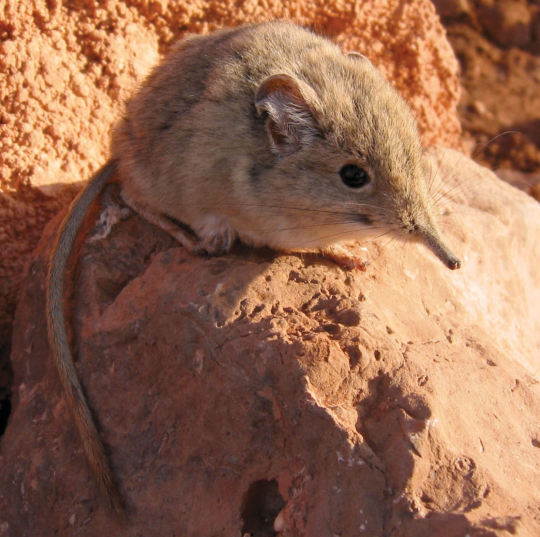
📷1: “Petrosaltator rozeti-Zootaxa.jpg” by Galen B. Rathbun on Wikimedia Commons (CC BY-SA 3.0)
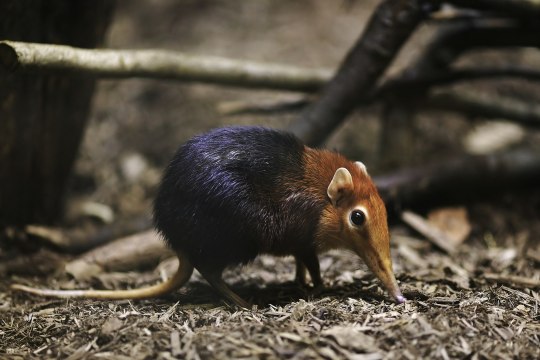
📷2: “Rhynchocyon petersi from side.jpg” by Joey Makalintal on Wikimedia Commons (CC BY 2.0)
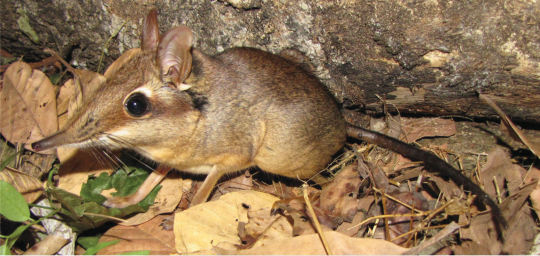
📷3: “Petrodromus tetradactylus-Zootaxa.jpg” by Galen B. Rathbun on Wikimedia Commons (CC BY-SA 3.0)
8 notes
·
View notes
Text
Monotremes (Monotremata) are the only mammals (extinct or extant) that do not give live birth. Based on this information and this tree, what type of group are mammals that give live birth?
Monotremes (Monotremata) are the only mammals (extinct or extant) that do not give live birth. Based on this information and this tree, what type of group are mammals that give live birth?
Monotremata Marsupialia Assume the mammal cladogram on the right depicts accurate evolutionary relationships. While there is no absolute time on this cladogram, there is relative time running from left to right (right is more recent). Answer the following questions about this tree. Afrosoricida – Macroscelidea Tubulidentata Proboscidea Hyracoidea Sirenia Xenarthra Dermoptera 1. Monotremes…
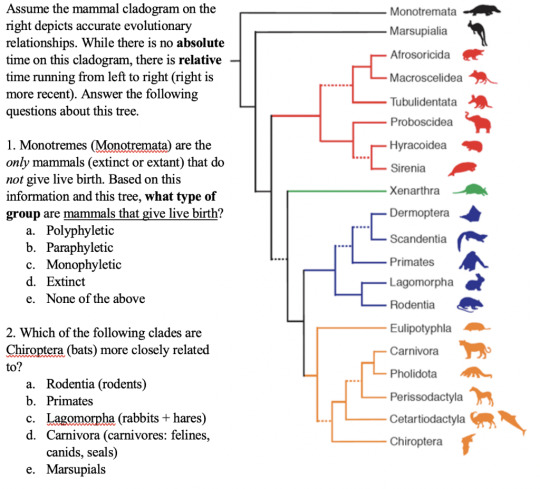
View On WordPress
3 notes
·
View notes